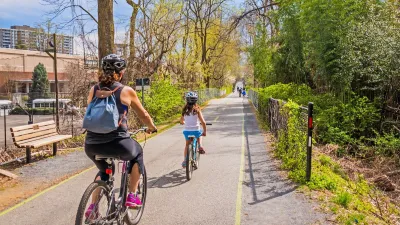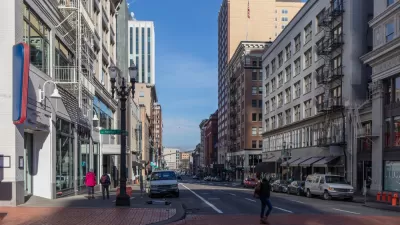An inordinate amount of traffic fatalities occur in developing parts of the world. In some countries, road deaths have surpassed diseases like AIDS and Tuberculosis as a public health threat.
The Washington Post has collected testimonies and data from writers in countries like Nigeria, Indonesia, Colombia, and Mali in a large “Roads Kill” feature. Despite efforts like the U.N. General Assembly’s 2010 resolution proclaiming a “Decade of Action for Road Safety,” donor funding has fallen well below targets and road deaths are increasing: a global death toll of 1.24 million per year is expected to triple by 2030.
Some of the key statistics reported by Tom Hundley and Dan McCarey at the beginning of the "Roads Kill" feature:
- “Poor countries account for 50 percent of the world’s road traffic but 90 percent of the traffic fatalities.”
- “The costs associated with these deaths are a ‘poverty-inducing problem,’ according to Jose Luis Irigoyen, a traffic safety specialist at the World Bank. ‘It’s costing on average between 1 and 3 percent of GDP’ in low- and middle-income countries, he said, an amount that can offset the billions of dollars in aid money that these countries currently receive.”
The “Roads Kill” feature also includes an interactive map that surveys the world for case studies, including success stories such as Australia, described as the “poster boy” for reform: “In the mid-1970s, Aussies were among the world’s most reckless drivers, with a death rate of more than 30 per 100,000 in population. But strict enforcement of safe driving laws resulted in an 80 percent decline in road fatalities over the next six decades.”
FULL STORY: Roads Kill: The toll of traffic accidents is rising in poor countries

Trump Administration Could Effectively End Housing Voucher Program
Federal officials are eyeing major cuts to the Section 8 program that helps millions of low-income households pay rent.

Planetizen Federal Action Tracker
A weekly monitor of how Trump’s orders and actions are impacting planners and planning in America.

Ken Jennings Launches Transit Web Series
The Jeopardy champ wants you to ride public transit.

Crime Continues to Drop on Philly, San Francisco Transit Systems
SEPTA and BART both saw significant declines in violent crime in the first quarter of 2025.

How South LA Green Spaces Power Community Health and Hope
Green spaces like South L.A. Wetlands Park are helping South Los Angeles residents promote healthy lifestyles, build community, and advocate for improvements that reflect local needs in historically underserved neighborhoods.

Sacramento Plans ‘Quick-Build’ Road Safety Projects
The city wants to accelerate small-scale safety improvements that use low-cost equipment to make an impact at dangerous intersections.
Urban Design for Planners 1: Software Tools
This six-course series explores essential urban design concepts using open source software and equips planners with the tools they need to participate fully in the urban design process.
Planning for Universal Design
Learn the tools for implementing Universal Design in planning regulations.
Heyer Gruel & Associates PA
Ada County Highway District
Institute for Housing and Urban Development Studies (IHS)
City of Grandview
Harvard GSD Executive Education
Toledo-Lucas County Plan Commissions
Salt Lake City
NYU Wagner Graduate School of Public Service





























